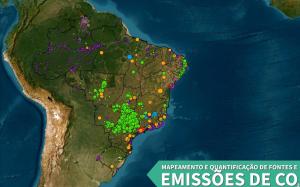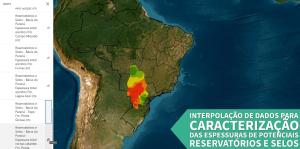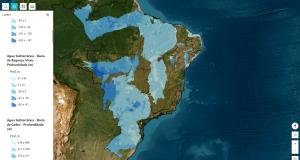O uso deste material é autorizado apenas para fins editoriais.
Petrobras is releasing a digital tool that stimulates a reduction in CO2 emissions
The platform costs BRL 2 million and gives free online access to data on the entire country
Petrobras News Agency
Representatives from Petrobras and IPR-PUCRS at the platform launch ceremony
Download Representatives from Petrobras and IPR-PUCRS at the platform launch ceremonyThe GIS CCUS Brasil platform gathers all public information on carbon capture and storage (CCUS) in Brazil on a single website. It is online and free and provides essential data to set up new projects, such as the amount of CO2 emitted, existing national infrastructure, and potential reservoirs for geological storage. The platform has been nominated for the 2024 ANP Award for Innovation, which is already available and can be accessed at https://www.pucrs.br/ipr/plataforma-gis-ccus-brasil/.
“Petrobras conceived, sponsored, and technically supervised the development of the GIS CCUS Brazil Platform aimed at raising discussion, expanding the overall knowledge of the technology, encouraging possible partnerships to launch projects, and stimulating the regulations, standards, targets, and incentives for decarbonizing the industries,” explained Renata Baruzzi, Petrobras’s Engineering, Technology, and Innovation Director.
The tool was developed in partnership with the Petroleum and Natural Resource Institute (IPR) of PUCRS, technically supported by Petrobras’s experts, and funded with the company’s means through an ANP Research, Development, and Innovation clause for oil contracts. The platform gathers georeferenced data organized into a Geographic Information System (GIS) and has its own database that comprises the following:
- Location and quantity of emissions from over 1,500 CO2 sources from sectors that are hard to reduce and energy generation;
- 18 thousand infrastructure and logistics elements;
- Over 370 thousand areas that are restricted or liable to socioenvironmental protection;
- Data on 30,621 exploitation wells, 14,900 geophysical surveys, and geological information on 72 land and sea sedimentary basins;
- Analysis of the potential for geological CO2 storage in the Brazilian sedimentary basins;
- Distribution and thickness of the storage system elements, particularly the volumetric capacity of depleted salt reservoirs and hydrocarbon fields;
- Four specific interactive panels for a spatial view of quantified issuing sources, infrastructure and logistics, subsurface data, and storage resources.
The CCUS Platform is fed with public data prospected from programs such as the Revitalization of the Oil and Natural Gas Exploitation and Production in Land Areas (REATE) and Revitalization and Incentive to the Maritime Field Production (PROMAR) and information from sources such as the IPCC, the UN Intergovernmental Panel on Climate Change, the GHG Protocol, international emission measurement and management protocol, and the Ministry of Science and Technology.
In addition to the web platform, the development agreement also provides for creating a new CCUS atlas with all the technical and scientific content regarding this issue, including information on prospective CO2 storage reservoirs collected and analyzed during the project. The bilingual document will be published and made available for downloading; it may be released early next year.
Check out the video of the platform competing for the ANP Innovation Award:
Photos





Downloads
Text of this article
Text downloadVideos from this article
You may be interested in
Browse the Sections:
Choose a channel:
Accessibility:
Language:
Select a language:







